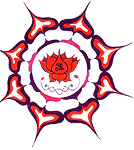
Osteopathic Medicine in Aumdoc's Bodywork
My approach to bodywork is rooted most strongly in Osteopathic Medicine. Osteopathic Physicians all receive training in Osteopathic Manipulative Therapy during their first two years of medical school. It is part of what makes Osteopathic medical education distinctive from allopathic (M.D.) training. Unfortunately, in today's world most Osteopathic Physicians (D.O.) DO NOT take advantage of this training and DO NOT PRACTICE OSTEOPATHIC MEDICINE WITH ANY DISTINCTION FROM THEIR M.D. COLLEAGUES. The only thing different, usually, is the degree letters after their names. I feel this is a very unfortunate situation. Here is a little about this unfortunate situation and why I consider myself a TRUE OSTEOPATHIC PHYSICIAN.
Osteopathic philosophy and practice are what drew me to become an Osteopathic Physician. Here is a little about why I became and Osteopathic Physician.
I was trained as an Osteopathic Physician at the second oldest Osteopathic Medical School in the country (now Des Moines University - College of Osteopathic Medicine & Surgery). My interest was strong enough to motivate me to take a full year pre-doctoral academic & clinical fellowship (i.e. a years specialty work) in Osteopathic Manipulative Therapy. More about my Osteopathic mentor Dr. J.Gordon Zink's Respiratory-Circulatory approach here.
So the basis for my bodywork is Osteopathic Manipulative Therapy (OMT). But it has been transformed by, and added to, by so many different other practices that it would no longer look like an OMT treatment to another Osteopathic Physician.
OMT OVERVIEW
Within the profession of Osteopathic Medicine there is a very wide range of practice styles for Osteopathic Manipulative Therapy. There is interest in, and some controversy about, the original techniques and method of application taught by the founder of the profession, Andrew Taylor Still, D.O.
I was trained to treat patients with OMT as part of a physicians practice. It was all a doctors visit. They came in and we took the history and performed a structural exam, diagnosed the issue and applied a manipulative technique to treat the specific problem. Pretty much the same approach I would take to evaluating and treating a cough. Patients did not disrobe for the treatment, they were treated in their street clothing. Depending on how busy the practice, the visits ranged from 10-30 minutes usually, sometimes longer. There are ICD-9 diagnostic codes for Somatic Dysfunction as well as Treatment Codes for Osteopathic Manipulative Therapy. Some insurance companies will reimburse for these diagnosis and procedures, and many will not.
OMT is applied to treat specific medical problems, and can be used to promote wellness and healing. All D.O.'s are trained in a wide variety of treatment techniques that are meant to be mixed and matched to the patients needs and the practitioners skills.
My current bodywork does not resemble this at all, though it is still rooted in Osteopathic Principles!
Osteopathic Medicine Historically
The Deterioration of Osteopathic Philosophy & Practice
The fact that Osteopathic Manipulative Therapy has become a field of specialization within the Osteopathic medical profession is a reflection of the deterioration of the original philosophy and practice of this tradition. Bodywork is now seen as a separate something you are taught, and that a few doctors 'actually still do'. It is a separate type of therapy, like drug therapy or surgery or physical therapy. This is NOT a true reflection of the history and philosophy of the Osteopathic Profession.
xxxxx(Originally, the principles that the soma (body) reflected the state of the internal organs (the viscera) and the state of the organism as a whole (the patient's experience of living) was fully integrated in the diagnosis and treatment of disease. Such that if the Osteopathic Cardiologist was evaluating the patient, the structural diagnosis (evaluating the musculoskeletal system) had direct pertinence to the cardiac problem at hand. The reflection of the cardiac problem on the soma helped the physician make a diagnosis because they were able to assess the reflection on to the spinal centers.)
Osteopathic History
Osteopathic Technique

![]()
Home ![]() Intro
Intro ![]() Medicine Pages
Medicine Pages ![]() Moontime & Menopause Medicine Wheel
Moontime & Menopause Medicine Wheel
Ritual & Ceremony ![]() Temple of Health Radio Show
Temple of Health Radio Show ![]() Links & References
Links & References
![]() Events
Events ![]() Divine
Light Farms
Divine
Light Farms ![]()

